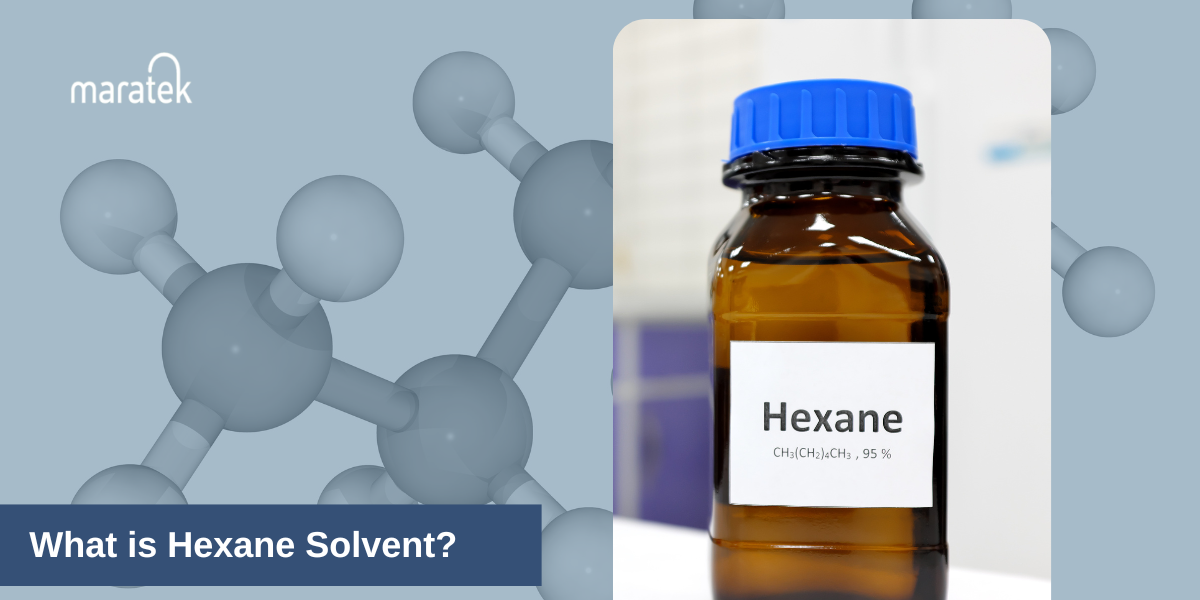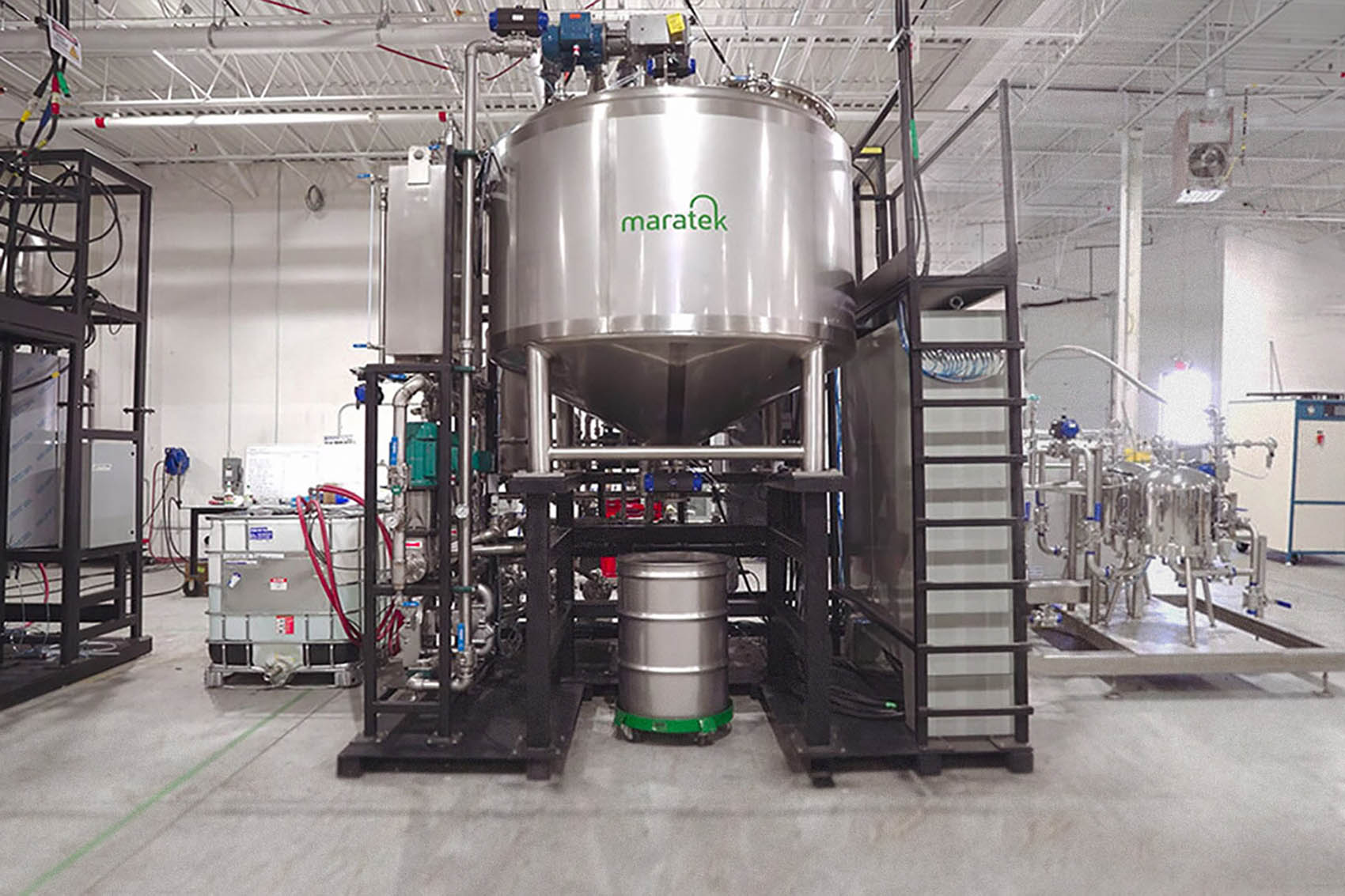What is Hexane Solvent?
 Hexane is an organic compound that is a straight chain alkaline, and is used in a range of extraction scenarios. The molecular formula of hexane is C6 and H14, which translates to six carbon and fourteen hydrogen.
Hexane is an organic compound that is a straight chain alkaline, and is used in a range of extraction scenarios. The molecular formula of hexane is C6 and H14, which translates to six carbon and fourteen hydrogen.
Hexane is a colorless liquid and is odorless in its purest form, and is commonly found extracted from petroleum and crude oil. Hexane’s properties allow its boiling point to be around 69 degrees Celsius or 156 degrees Fahrenheit which is relatively low compared to other compounds.
How is hexane used?
Hexane is used as a non-polar solvent as well as a neurotoxin. Other uses of hexane include extracting edible oils from seeds and vegetables as well as acting as a cleaning agent. Hexane is found in products such as special glues and the shoe industry. Furthermore, hexane can be found in everyday products like gasoline and rubber cement.
Why is hexane used?
Hexane is a popular solvent for extraction as its unique properties make it efficient and effective to use. The main reason behind hexane being the preferred chemical for extractions is because of its high evaporation rate and low boiling point. Its low boiling point allows hexane to retain its liquid state in cold temperatures. The high evaporation rate of hexane allows this solvent to extract the largest amount of oil in the quickest amount of time.
In addition, hexane is effective to use because it produces no toxic fumes which makes it a safe solvent for users as it does not raise any health concerns. Finally, hexane is relatively affordable in the market as its high demand in multiple industries makes it an attractive commodity for suppliers to manufacture for their buyers.
Hexane is not only used for extractions, but it is also found in glue products as well. Whether this be in the construction industry, the shoe industry, or the arts industry, hexane is an effective chemical to use as it is one of the strongest organic solvents. Organic solvents are effective in glue products as it dissolves material which allows the objects to wield together making a strong force. Organic solvents are designed to work with specific materials as well, due to the molecular structure of the adhesive compound being compatible.
The risks and regulations of hexane
Hexane is one of the safer solvents for users as it does not produce a high volume or concentration of toxic fumes when it is evaporated. However, hexane is still a dangerous waste for the environment and humans as all chemicals contain dangerous molecules that can have a negative impact. Hexane can cause nerve damage when users are exposed to improper ventilation or missing personal protection equipment. In recent research studies, hexane was found to cause dizziness, headaches, confusion, and nausea as short-term effects.
The regulations of hexane have increased over the years with advanced technology and research studies to help identify more health concerns for humans. The congress has identified hexane to be a hazardous air pollutant under the Clean Air Act. Hexane is regulated under the EPA with limited restrictions on outdoor emissions and workplace exposure.
Hexane safety and handling best practices
Establishing safe handling procedures: Due to its chemical nature, handling hexane requires strict safety protocols. This involves using appropriate personal protective equipment, ensuring proper ventilation in work areas, and training employees in safe handling and emergency response.
Emergency preparedness: It is crucial to have well-defined procedures for dealing with hexane spills or leaks. This includes having spill containment materials readily available, understanding the proper disposal methods for hexane waste, and ensuring all staff are trained in emergency response techniques.
Storage and transportation: Safe storage and transportation of hexane are vital. Hexane should be stored in well-ventilated areas, away from heat sources or ignition points. Transportation regulations must be strictly followed to prevent accidents and ensure public safety.
Hexane is a hazardous waste that also needs to be disposed of properly, or recycled as failure to do so can lead to major fines for environmental harm. Hexane can be disposed through atomizing a combustible chamber or even recycled through distillation.
Technological innovations in hexane extraction
Advancing extraction efficiency
Recent technological advancements in hexane extraction have significantly enhanced both efficiency and safety. Innovations include precision distillation equipment, automated control systems for better process management, and improved solvent recovery techniques.
Eco-friendly approaches
Emerging technologies are focusing on reducing the environmental footprint of hexane extraction. This includes the development of closed-loop systems that minimize emissions and the incorporation of green chemistry principles to ensure sustainable operations.
Interested in learning more about hexane solvents and its advantages for oil extraction? Maratek would be pleased to answer any of your questions. Contact us today!





